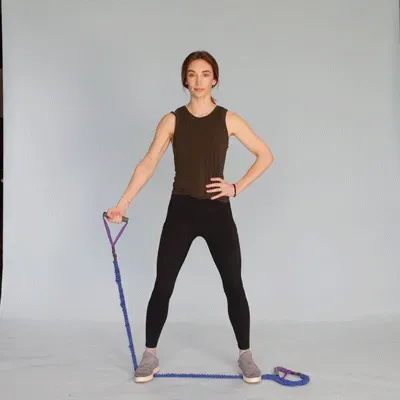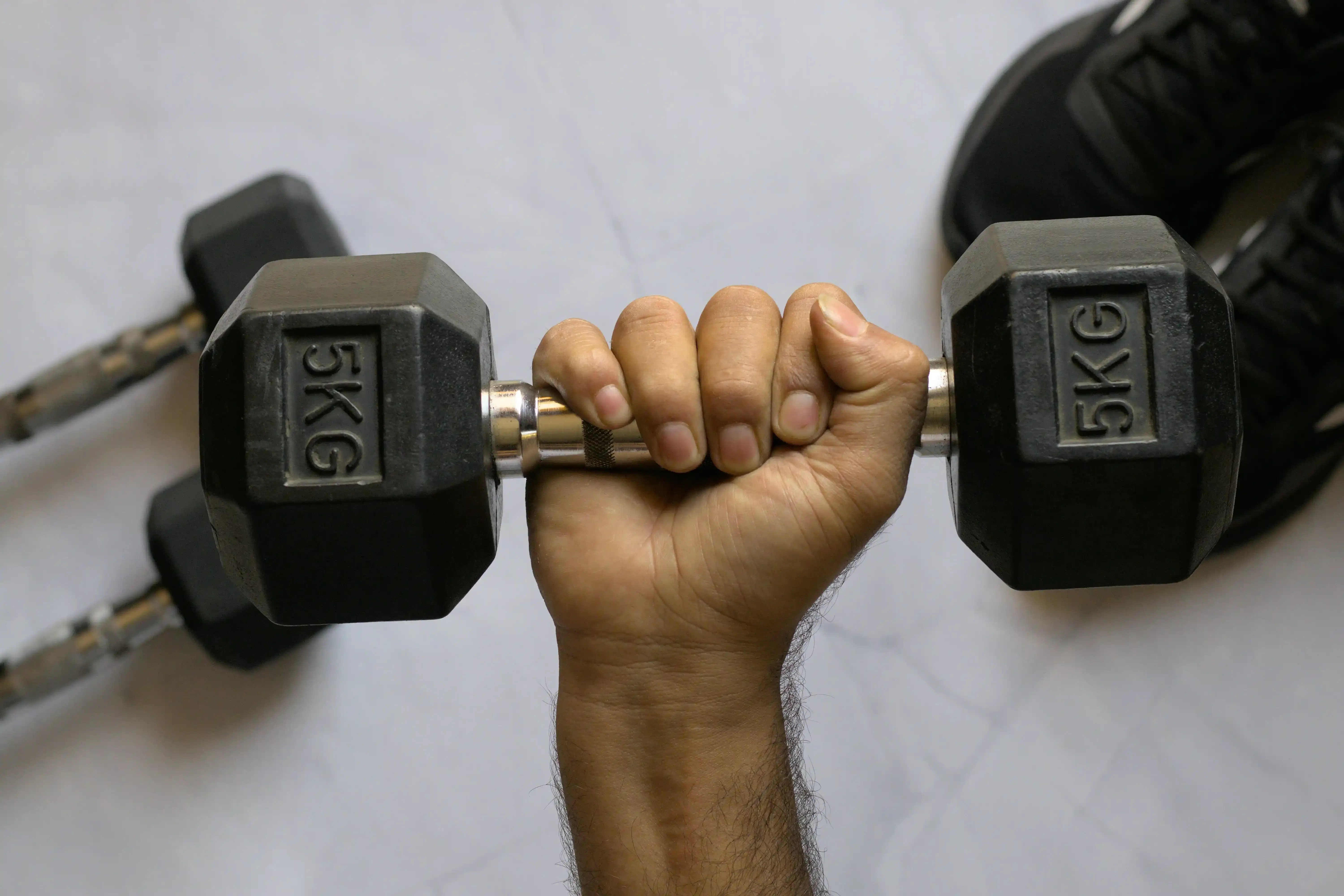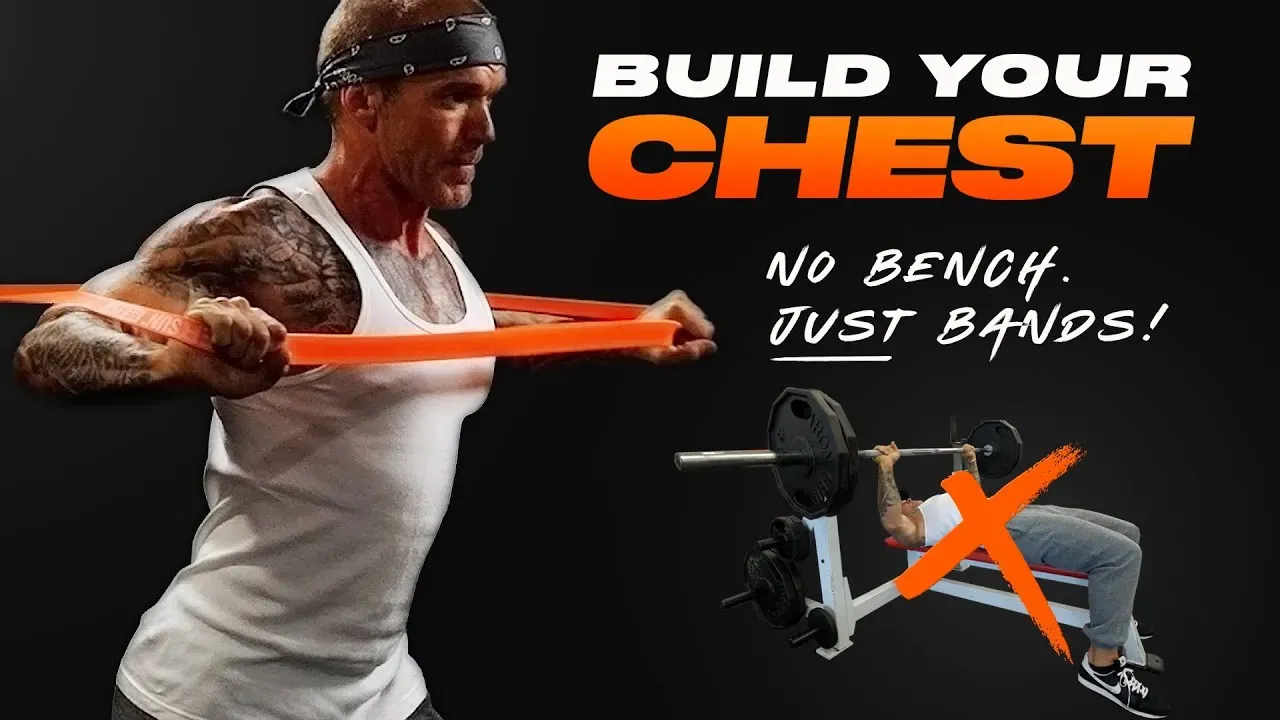Table of Contents
Gym packed? Travel schedule tight? Or maybe you just prefer sweating it out without an audience? Getting a solid chest workout used to feel like a gym-or-bust scenario. Those clunky weights and occupied machines were the standard. But let's be real, life doesn't always fit neatly into gym hours or locations.
Why Resistance Bands are Your At Home Chest Workout Powerhouse

Why Resistance Bands are Your At Home Chest Workout Powerhouse
The Magic of Variable Resistance
Look, you've probably seen resistance bands and thought, "Are those things serious?" It's a fair question if you're used to stacking plates on a barbell. But here's the deal: resistance bands offer something unique – variable resistance. Unlike free weights, where the resistance is constant throughout the movement (thanks, gravity), bands get harder as you stretch them. Think about a push-up. It's toughest at the bottom, right? With a band, it's often toughest at the top, when your chest is fully contracted. This constantly changing tension forces your muscles to work differently throughout the entire range of motion, hitting fibers you might miss with traditional weights. It's not just about brute force; it's about smart tension.
Portable Power and Wallet-Friendly Gains
Let's talk logistics. A full set of dumbbells or a bench press setup takes up space – a lot of space. And let's not even get started on the price tag. Resistance bands? You can stash a whole collection in a drawer or a small bag. They're the ultimate travel companion for your fitness goals. Heading out of town? Toss a few bands in your suitcase. Don't want to clutter your apartment? No problem. They offer serious resistance for a fraction of the cost of traditional equipment. Building a strong chest doesn't require turning your living room into a commercial gym.
It’s like having a portable gym for your chest, ready whenever and wherever you are. No waiting for machines, no monthly fees.
- Easy to store
- Lightweight and portable
- Significantly cheaper than weights
- No gym membership required
Joint-Friendly Tension, Real Results
Another often-overlooked benefit is how resistance bands treat your joints. The tension is smooth and follows your natural movement patterns better than some fixed machines. This can mean less stress on your elbows and shoulders, which is a big plus if you've got nagging joint issues or just want to train longevity. Does this mean they're easy? Absolutely not. You can get incredible tension and muscle activation. The burn is real, the pump is real, and the results are real. You can absolutely build strength and muscle mass with consistent, challenging work using just bands for your chest.
Essential Resistance Band Exercises for Your Chest

Essential Resistance Band Exercises for Your Chest
Band-Resisted Push-Ups: The Foundation
so you know push-ups. They're a classic for a reason, hitting your chest, shoulders, and triceps all at once. But adding a resistance band? That takes things up a notch, especially for your at home chest workout resistance bands routine. Loop a band across your upper back, holding the ends under your hands. As you push up, the band stretches, making the top part of the movement significantly harder. Remember how I said bands provide variable resistance? This is where you feel it most. It forces you to really squeeze your chest at the top, getting that peak contraction that's often missed with just bodyweight.
Start with a lighter band to get the form down. Keep your body in a straight line from head to heels, core tight. Lower yourself under control until your chest is close to the floor, then explode back up, fighting the band's pull. If full push-ups are too tough, do them on your knees, but still use the band to add resistance. The goal isn't just to move up and down; it's to move with tension and purpose.
Standing Band Presses: Replicating the Bench
No bench? No problem. You can mimic the motion of a bench press effectively with resistance bands. Anchor the band behind you at chest height – a sturdy pole, a closed door with an anchor strap, whatever works. Grab an end in each hand, step forward to create tension, and press your hands straight out in front of your chest. Your palms can face down or slightly towards each other; play around to see what feels best on your shoulders.
This exercise is gold because it lets you focus purely on the horizontal pressing motion, just like a bench press. Keep your core engaged and avoid leaning back. Control the eccentric (lowering) phase, letting the band slowly pull your hands back towards your chest before pressing out again. You can do these with both hands together, or one arm at a time for unilateral work. It's a fantastic way to load the chest muscles without needing a spotter or heavy equipment, making it a staple in any solid at home chest workout resistance bands program.
Here are a couple more effective moves to add:
- Band Chest Flyes: Anchor the band behind you. With a slight bend in your elbows, bring your hands together in front of your chest in a wide arc, like you're hugging a tree. This isolates the outer chest fibers.
- Band Decline Press (simulated): Anchor the band low, near the floor. Lie on your back (or stand and press upwards at an angle). Press the bands upwards and slightly towards your head. This targets the lower chest.
Building and Structuring Your At Home Chest Workout Resistance Bands Routine

Building and Structuring Your At Home Chest Workout Resistance Bands Routine
Picking Your Power Moves
so you've got your bands and you know a few exercises. Now, how do you string them together into an actual workout? Think of it like building a meal – you need a main course and some sides. For your at home chest workout resistance bands routine, you want a mix of pressing movements and fly movements to hit the chest from different angles. A good starting point is picking 2-4 exercises. Maybe you start with band-resisted push-ups as your main compound move, then add standing band presses, and finish with band flyes to really isolate the muscle. The key is choosing exercises you can perform with good form and that challenge you with the available bands.
Sets, Reps, and Feeling the Burn
How many sets and reps should you do? This isn't rocket science, but it requires paying attention to your body and the band. For building muscle, aiming for 3-4 sets per exercise with repetitions in the 10-20 range is a solid bet. The band you choose should make the last few reps tough, but not so hard that your form crumbles. If you can easily crank out 25 reps, grab a thicker band or double up. If you can only do 5 shaky reps, go lighter. The beauty of bands is you can often combine them or adjust your position to fine-tune the resistance. Don't just go through the motions; focus on squeezing the chest at the peak contraction and controlling the movement on the way back.
What does a typical workout structure look like?
- Warm-up (5-10 minutes of light cardio and dynamic stretches)
- Exercise 1 (e.g., Band Push-Ups): 3-4 sets, 10-15 reps
- Exercise 2 (e.g., Standing Band Press): 3-4 sets, 12-18 reps
- Exercise 3 (e.g., Band Chest Flyes): 3-4 sets, 15-20 reps
- Cool-down (5 minutes of stretching)
Making it Harder When it Gets Easy
The goal is progress, right? Eventually, those sets of 15 reps with a certain band will feel too easy. That's a good thing! It means you're getting stronger. So, how do you keep progressing with your at home chest workout resistance bands? The most obvious way is to use a stronger band or combine bands for more resistance. You can also increase the number of repetitions per set, or add an extra set to each exercise. Another trick is to slow down the eccentric (lowering) part of the movement, increasing the time under tension. Or, try adding pauses at the point of peak contraction. Getting creative with how you apply tension is key when you don't have heavier weights to grab.
Maximizing Safety and Results with At Home Chest Workout Resistance Bands

Maximizing Safety and Results with At Home Chest Workout Resistance Bands
Inspect Your Equipment, Seriously
Before you even think about stretching a band for your at home chest workout resistance bands, give it a look. Bands aren't indestructible. They can develop nicks, tears, or weak spots over time, especially if they're old or haven't been stored properly (like left in direct sunlight or extreme temperatures). A band snapping mid-exercise isn't just inconvenient; it can be downright dangerous. Imagine a thick band breaking during a standing press – that recoil can sting, or worse. Make it a habit to quickly inspect your bands before each session. Look for any signs of wear and tear near the handles or loops, or anywhere along the length of the band. If a band looks compromised, retire it. It's cheaper than a trip to the doctor.
Master Your Form, Control the Tension
Just because you're not lifting heavy metal doesn't mean form goes out the window. Arguably, form is even more critical with resistance bands because the tension changes. It's easy to let the band pull you around, especially during the eccentric (lowering) phase. Don't let it. Control the band's recoil. Think of it like resisting the pull rather than just letting your arms fly back. For a band press, keep your elbows slightly bent and tucked, not flared out like chicken wings. For band flyes, maintain that soft elbow bend throughout the movement. Focus on the muscle you're trying to work – your chest – and make it do the job. Speed isn't the goal; controlled, deliberate movement under tension is. Cheating reps with bands just means you're getting less benefit and potentially setting yourself up for an injury.
- Always check bands for wear and tear.
- Securely anchor bands to stable points.
- Control the movement, especially the eccentric phase.
- Focus on muscle contraction, not just moving the band.
- Listen to your body; stop if you feel sharp pain.
Progress Smartly, Listen to Your Body
Getting results from your at home chest workout resistance bands isn't about ego; it's about consistency and smart progression. Don't jump to the thickest band on day one unless you can handle it with perfect form. Start with a band that allows you to complete your target reps with effort but without struggling to maintain control. As you get stronger, then you increase the resistance, reps, or sets, or try more challenging exercise variations. Pay attention to how your body feels. Some muscle soreness is normal, but sharp pain in your joints or tendons is a red flag. Bands are joint-friendly, but you can still overdo it. Recovery is just as important as the workout itself. Don't train your chest intensely with bands every single day; give your muscles time to repair and grow.
Your At Home Chest Gains Are Within Reach
So, there you have it. Building a strong, functional chest doesn't require a gym membership or a garage full of iron. An at home chest workout resistance bands routine offers a legitimate path to muscle development, providing variable resistance that challenges your pecs in unique ways. You now have the tools – understanding the bands, knowing the key exercises, and having a framework for programming. Consistency and proper form remain the critical factors, just as they are with any training method. Stop waiting for the perfect time or place; the equipment you need might just be a band away.
